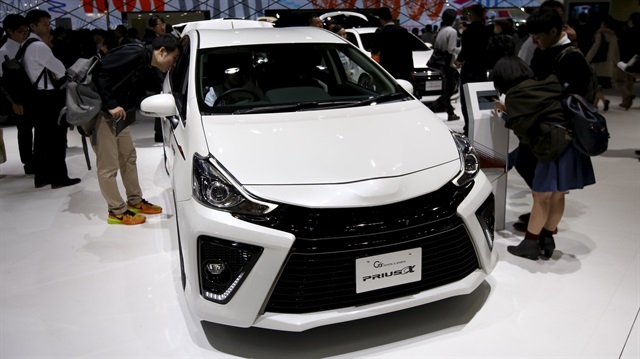
Driverless cars create buzz at 2015 biannual Tokyo Motor Show
The car of the future will drive itself powered by a fuel that has no greenhouse carbon emissions, just water vapor.
That was one conclusion at the 2015 biannual Tokyo Motor Show -- which ends Sunday -- where both technologies were on full display.
No carmaker has as yet married the two, but as separate technologies they vied for attention at the venue known for showcasing new automotive technology in so-called “concept cars". Eventually some of the concepts make their way onto the sales floor.
Certainly creating the most buzz at the show that featured 160 exhibitors, was the future driverless cars, also known as the automated driving car. It allows the driver to take his hands off the wheel and lets the sensors do the driving.
All of Japan's big automakers are ready to make a big push in self-driving cars. A week before the opening of the Motor Show, Honda said it planned to have its own self-driving car on the road by 2020.
The year 2020 for the car's debut was not chosen arbitrarily. It is the year for the 2020 Olympic Games in Tokyo, and the municipal and national governments are eager to use the Games to showcase Japanese innovation.
The National Police Agency plans to draw up guideline for driverless cars by March, 2017, and also explore the legal ramifications. While these vehicles are expected to contribute to reducing accidents and traffic jams, there is still the issue whether the driver of a “driverless" car can be held responsible for accidents.
The big Japanese automakers also have competition in driverless technology from an unusual place -- Silicon Valley. Google and some other tech giants are also working on automated driving technology with the idea of improving the computer software.
Whether these computer software companies are up to the styling and other details that go into making and selling cars remains to be seen.
At the show, Nissan, which makes the only commercial all-electric car, the Leaf, demonstrated its proposed automated driverless car, based mainly on the Leaf body by taking reporters for a ride on Tokyo streets.
After the passenger climbed into the back seat, the driver took his hands off the steering wheel and relied on the vehicle's cameras and other sensors to monitor traffic lights and the other cars on the road. Nissan's concept car has plenty of electronic sensors: twelve cameras, five radar scanners and four laser scanners along with geo-positioning equipment.
But at all times the driver was prepared to grab the wheel and take back control in his own hands. Obviously, the engineers -- and Nissan has about 100 of them working on the problem -- haven't worked out all of the bugs.
These instruments are said to be “smart' enough to navigate intersections without lane markers, and to brake safely without crashing into the vehicle in front.
It can also tell the difference between a red light and a red tail light.
Fumihiko Ike, the chairman of the Japan Automobile Manufacturers Association, speaking to reporters just before the show opened, urged caution even though his own company, Honda Motors, is working on its own version of the car.
“Personally, I don't see automated drivers on public roads, but maybe on express ways," he said.
It is not just a technology issue; there are social mix issues involved too. What if a box falls off the back of a truck you are following? “Is there enough time to react?"
Honda and Toyota also displayed their proposed new fuel cell cars (FCV) which run on hydrogen and emit only water vapor and heat in the exhaust thus becoming a completely green car.
Unlike the self-driving prototypes, the new fuel-cell cars can now be purchased off of the lot.
Toyota hopes that its entry into the field, the Mirai, (the future in Japanese) will become the next Prius, the hybrid gasoline-electricity car that has sold more than 8 million copies since it was introduced in 1997.
Toyota seems to be on track to reach its goal of selling 30,000 Mirai cars by the Olympics Year, 2020. It made only 700 FCV so far this year but has already attracted some 1,500 orders and is telling would-be customers that they may have to wait three years for delivery.
This is despite the fact that the car sells for about $43,000 in Japan and $57,000 in the United States where sales are expected to start this year. The retail price in Europe, where sales began in a small way this autumn, is about $60,000 plus sales tax.
Government subsidies to encourage green cars (Japan's is about $16,000 for FCV cars) will reduce the out-of-pocket somewhat as will the eventual effects of mass production.
The car is hand-made, and Toyota says it will make only 2,000 next year and 3,000 the year after. Only after it has tested the waters with these limited sales will it go into mass-production.
The other drawback besides the sticker price is the lack of hydrogen fueling stations. At the moment there are a mere 28 in Japan. To support the commercialization of fuel-cell cars the Japanese government has promised to build 100 refueling stations.


